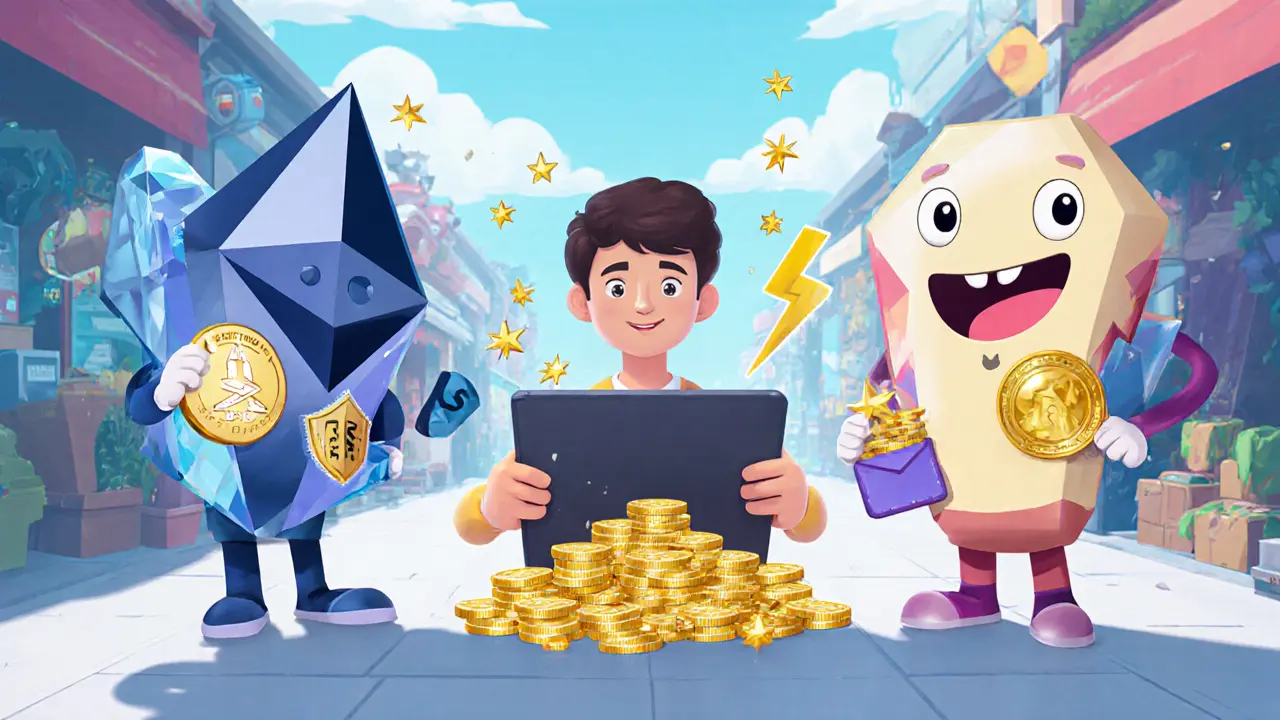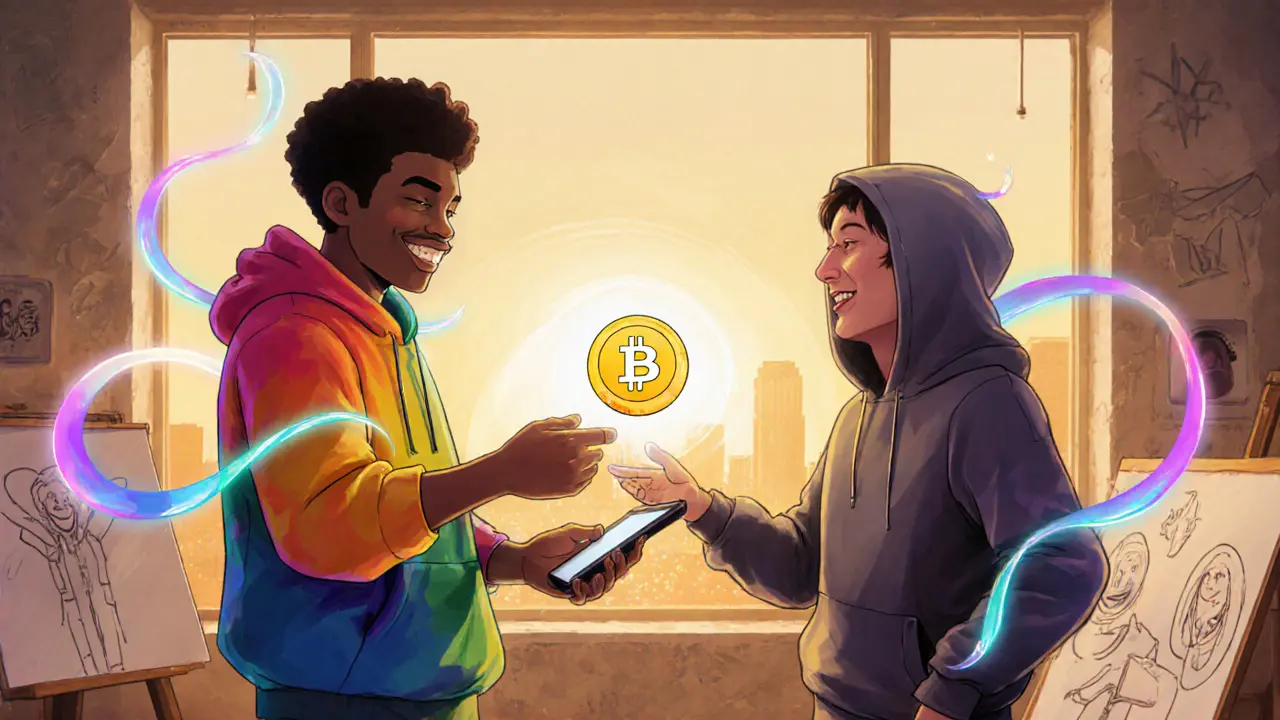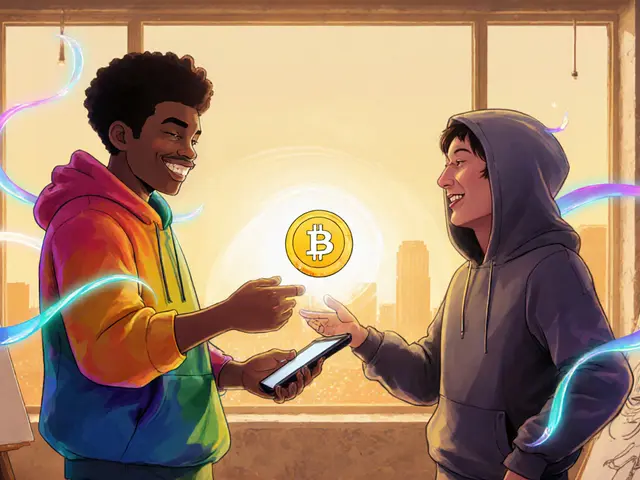NFT Creator Revenue Calculator
Key Considerations
When you hear NFTs is a non-fungible token that records unique ownership of digital or physical assets on a blockchain, you probably picture pricey art sold to collectors. In 2025 the story is different: creators use NFTs to lock in revenue, give fans exclusive experiences, and break free from endless platform algorithms. This guide walks you through the market landscape, revenue models, and step‑by‑step rollout so you can decide if NFTs belong in your creator toolkit.
Why NFTs Matter for Creators Today
Traditional income streams-ads, sponsorships, merch-are tied to a single platform’s rules. A sudden algorithm tweak can wipe out weeks of earnings. NFTs act as digital real estate that lives on the blockchain, meaning the asset stays with you and your fans regardless of any social site changes. According to a 2025 survey of 1,247 creators, those using NFTs reported 3.2 × higher revenue stability during platform updates.
Core Benefits at a Glance
- Direct creator‑to‑fan sales without middlemen fees.
- Programmable royalties that keep paying on every resale (average 3.5‑5.5 % royalty rates today).
- Community‑gated utilities: private Discord channels, exclusive video drops, physical merch redemption.
- Cross‑platform interoperability-your NFT works on Instagram, Shopify, or a custom website.
- Data ownership: you control wallet addresses, not a black‑box algorithm.
Where Creators Are Launching NFTs
Three blockchains dominate creator projects:
| Blockchain | Market Share | Typical Transaction Cost | Speed (seconds) | Common Use Cases |
|---|---|---|---|---|
| Ethereum | 68.3 % | $15‑$30 (gas) | 12‑15 | High‑value art, royalty‑heavy drops |
| Polygon | 19.7 % | $0.01‑$0.05 | 2‑3 | Mass‑minted collectibles, utility tokens |
| Solana | 8.2 % | $0.0005‑$0.001 | 0.5‑1 | Gaming items, fast‑turnover drops |
Ethereum still hosts 72 % of creator NFTs because its ERC-721 standard is the most widely supported. The newer ERC-1155 lets creators bundle multiple assets in a single contract, a feature that 21.8 % of projects now exploit for tiered access.
Revenue Models You Can Replicate
Creators are no longer selling a single image. Here are the four models that dominate the space:
- Royalty‑backed collectibles: Each resale triggers a 3‑5 % royalty that funds future content.
- Token‑gated membership: Holding a specific NFT unlocks a private Discord, a monthly video series, or early‑access tickets.
- Physical redemption: Fans swap an NFT for a limited‑edition t‑shirt or signed print.
- Cross‑platform experiences: An NFT grants entry to a virtual concert, then rewards the holder with a physical merch drop.
Data from AMT Lab shows 68.3 % of creator NFT revenue now comes from secondary‑market royalties, a dramatic shift from the early‑stage focus on one‑off sales.
Step‑by‑Step: Launching Your First Creator NFT
Even if you’re not a developer, you can get a drop live in less than a week using no‑code tools. Follow this workflow:
- Validate demand - Run a 2‑week poll in your Discord or Twitter community. Aim for at least 5 % of your audience expressing willingness to own an NFT.
- Design utility - Decide what the token unlocks (exclusive videos, merch, voting rights). Keep the benefits clear; 78 % of successful projects tie the NFT to a tangible perk.
- Choose a platform - For newcomers, Shopify’s NFT Studio (Q3 2024) or Instagram’s beta integration (Q1 2025) strip away the code. Select Ethereum for high‑value drops, Polygon for low‑cost mass minting.
- Create the contract - Use the platform’s template to set royalty percentage (3‑5 % typical) and metadata. Most tools auto‑generate ERC-721 contracts.
- Mint & market - Mint a small “founder’s edition” for top fans (often free) to generate buzz. Follow up with a public sale on OpenSea or Rarible.
- Maintain community - Hook the NFT holders into a dedicated Discord channel, run monthly AMA sessions, and release periodic royalty‑funded content.
Average launch time: 8.7 hours of work, according to The VC Corner’s 2025 creator survey.

Tools & Services Worth Knowing
Here’s a quick cheat‑sheet of the platforms most creators rely on:
- OpenSea - Marketplace with a 4.1/5 rating for creator tools.
- Rarible - Good for custom royalty structures, but a bit clunky (3.7/5).
- Discord - 92 % of NFT projects host token‑gated servers here.
- Shopify’s NFT Studio - Turns physical merch into token‑backed products.
- Instagram NFT integration - Lets you post NFTs directly to your feed, reaching non‑crypto followers.
Common Pitfalls and How to Avoid Them
Even seasoned creators hit snags. Below are the three biggest issues and proven fixes:
- Wallet connection errors - 48 % of creators report failures in the first month. Solution: pre‑configure a MetaMask link on your site and provide a step‑by‑step guide in a pinned Discord post.
- Gas fee spikes - Ethereum can surge to $30+. Mitigation: schedule minting during off‑peak hours or switch to Polygon for lower fees.
- Audience confusion - Only 38 % of general social users understand NFT utility. Counteract with clear explainer video and FAQs that break down “what you get for owning this token.”
Future Outlook: NFTs Beyond 2025
Analysts project NFTs will make up 12.7 % of total creator‑economy revenue by 2027 - roughly $55 billion. Two trends will shape that growth:
- AI‑generated personalized NFTs: Creators use generative models to mint one‑of‑a‑kind tokens for each top fan, boosting perceived value.
- Soulbound tokens (5.8 % adoption today) that act as non‑transferable credentials-perfect for certification, loyalty tiers, and community reputation.
With clearer SEC guidance distinguishing utility NFTs from securities, legal risk is dropping, making it safer for both creators and brands.
Do I need to know how to code to launch an NFT?
No. Platforms like OpenSea, Shopify’s NFT Studio, and Instagram’s beta let you use drag‑and‑drop templates. You only need basic digital‑literacy to manage a wallet and upload metadata.

Which blockchain should I choose for a low‑budget drop?
Polygon offers the lowest transaction fees and fast confirmation times, making it ideal for mass‑minted collectibles or community‑gated access tokens.
How are royalties actually paid?
When a secondary buyer purchases your NFT on a marketplace, the smart contract automatically sends the pre‑set percentage (usually 3‑5 %) to your wallet. The process is transparent and occurs on‑chain.
Can NFTs replace my ad revenue?
Not completely. Most creators use NFTs as a complementary stream that smooths out the volatility of ad‑based income. A blended approach tends to be the most stable.
What regulatory risks should I watch?
Utility‑focused NFTs are largely unregulated, but if the token is marketed primarily as an investment, it could fall under securities law. Stick to clear utility benefits and disclose royalty structures to stay safe.


Comments
The moment I saw those gas fees spike, I felt the ground shift beneath my creative soul-NFTs are the wild west of digital freedom, and every creator is a frontier‑rider tonight.
When the algorithm changes, your revenue shouldn’t become a ghost town.
It’s really encouraging to see how many creators are turning these tools into community‑building bridges rather than just revenue machines. The best projects always start with a clear purpose and then let the token add extra value.
Bottom line: pick the chain that fits your budget and your audience’s tech comfort.
Exactly, and throwing in a 🎨 or 🚀 emoji can make the drop feel more alive for the fans who love visual cues! It’s the little touches that turn a simple token into a cultural moment.
Start small: mint a “founder’s badge” on Polygon, give it to 10 super‑fans, and watch the buzz grow.
One cannot simply dismiss the profound implications of programmable royalties, which, when judiciously calibrated, bestow upon the creator a perpetual conduit for value redistribution, thereby transcending the antiquated paradigms of one‑off sales, and, moreover, fostering a symbiotic ecosystem wherein each secondary transaction serves as a micro‑investment back into the original artistic vision, ultimately cultivating a self‑sustaining economic loop that defies conventional market volatility.
Sure, because every creator totally needs a free lesson on how to set a 3% royalty.